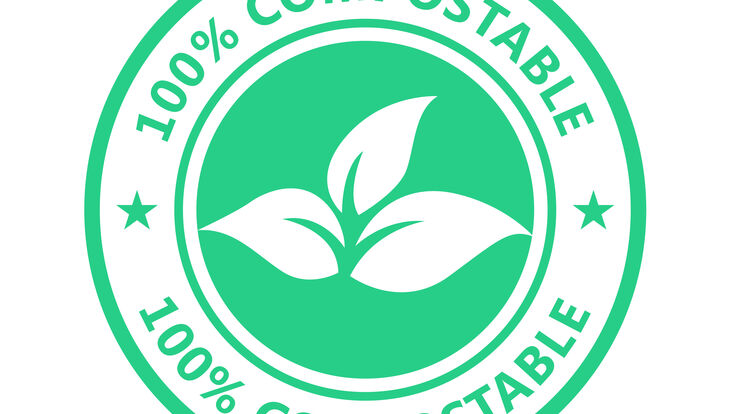Bioplastics : Compostable plastics are getting more sustainable but are still no cure-all

Companies have been increasingly investing in compostable plastics in a bid to curb global plastic pollution.
Some 125 brands and corporations (including L’Oreal, PepsiCo, Mars and The Coca Cola Company) have pledged to work towards ‘100% reusable, recyclable or compostable plastic packaging by 2025’ according to goals set out by the Ellen McArthur Foundation.
Compostable plastics refer to a subset of biodegradable plastics that break down into their natural components without leaving behind toxic residue. Technically, all plastics can break down-the only difference is the time frame and the conditions needed. Both biodegradable and compostable plastics break down under natural biological processes, but compostable plastics also produce carbon dioxide, water, inorganic compounds and biomass that can be directly beneficial to the environment.
Biodegradeable is not compostable
On this account, there has been some confusion over brands using the terms ‘compostable’ and ‘biodegradable’ interchangeably. Consumers might assume that a product can break down in a compost bin due to its marketing but often, biodegradability occurs only in industrial composting units where temperatures can be maintained at 60°C for weeks on end, unlike garden compost bins where temperatures range from 10-30°C.
Only bioplastics that are labelled ‘certified compostable plastic’ are designed to be composted in municipal and industrial aerobic composting conditions-it’s important to note that often, these can’t be collected via green bin curbside recycling systems and require businesses to make separate arrangements with aerobic composting facilities.
The overall transition towards more compostable plastic alternatives has not only been complicated by these difficulties in general disposal but also due to their shortcomings with regards to functionality.
Constantly improving bioplastics
For a long time, using virgin plastics proved the better solution when considering properties such as heat distortion, rigidity and moisture sensitivity. In the last ten years, however, things have started to change. Polyhydroxyalkanoates (PHA’s) are considered one of the most compostable materials on the market-combining high impact and heat resistance, they can biodegrade in a variety of conditions, being both soil and marine degradable, ranging from municipal solid waste systems, anaerobically digestible as well as home compostable.
Some companies have gone a step further to render the substitution of conventional polymers for their more sustainable compostable packaging even more desirable by not only matching their material properties but also trumping them.
TIPA in tandem with PerfoTec created a microperforated film that wraps around fresh produce and degrades into the soil at its end-of-life stage without leaving behind pollutants such as microplastics or toxic chemicals. Under scientific study, this compostable film was found to have increased the shelf life of bell peppers by 21 days and the shelf life of cucumbers by 15 days more than what could be achieved with petroleum-based plastics.
Yet even compostable plastics that check all the boxes ranging from functionality to sustainability still face major hurdles. In many countries, the necessary composting infrastructure is not available to the extent that would render the method a universal solution to plastic packaging waste.
In New Zealand, for instance, there are only 11 commercial composting facilities. These are all located on the more populated North Island rather than the South Island, these being the two major islands that make up the country. The composting system is not universal either, each facility being run according to its own standards and, as such, waste volumes that are processed differ widely.
Often, green bins ready to take in compostable waste are not to be found in residential areas, a problem shared in the US, where only 5% of households have access to commercial composting.
Bioplastics are not the silver bullett
In developing countries, awareness around compostable plastic represents the actual problem. In India, a ban on single-use plastics instituted this year does not make plans for the phasing out of compostable plastics on the premise that these are sustainably biodegradable. The assertion is technically correct, yet cannot be put into action realistically within an Indian context. This is because locals are often liable to equate ‘compostable plastic’ with ‘home compostable plastic’, being unaware that many plastics that are technically biodegradable are only so under industrial conditions. As such, these plastics often end up mixed with regular household waste, thereby contaminating the waste stream and rendering the material unfit for recycling.
As such, compostable plastics are no silver bullet solution, often depending on a beneficial interplay of relevant infrastructure and waste policy that entails proper waste collection and segregation. (Without appropriate collection systems, compostable plastics can accumulate on landfills where they emit methane, a gas more toxic than carbon dioxide.) They may, however, prove a viable solution in combination with reusable alternatives (ex. coffee cups, bottles, toothpaste bottles or shampoo bars), the main emphasis being on the reduction of plastic production.
